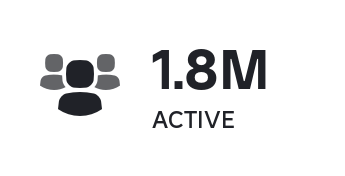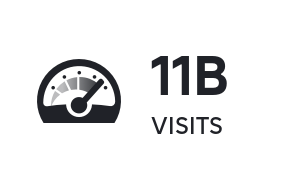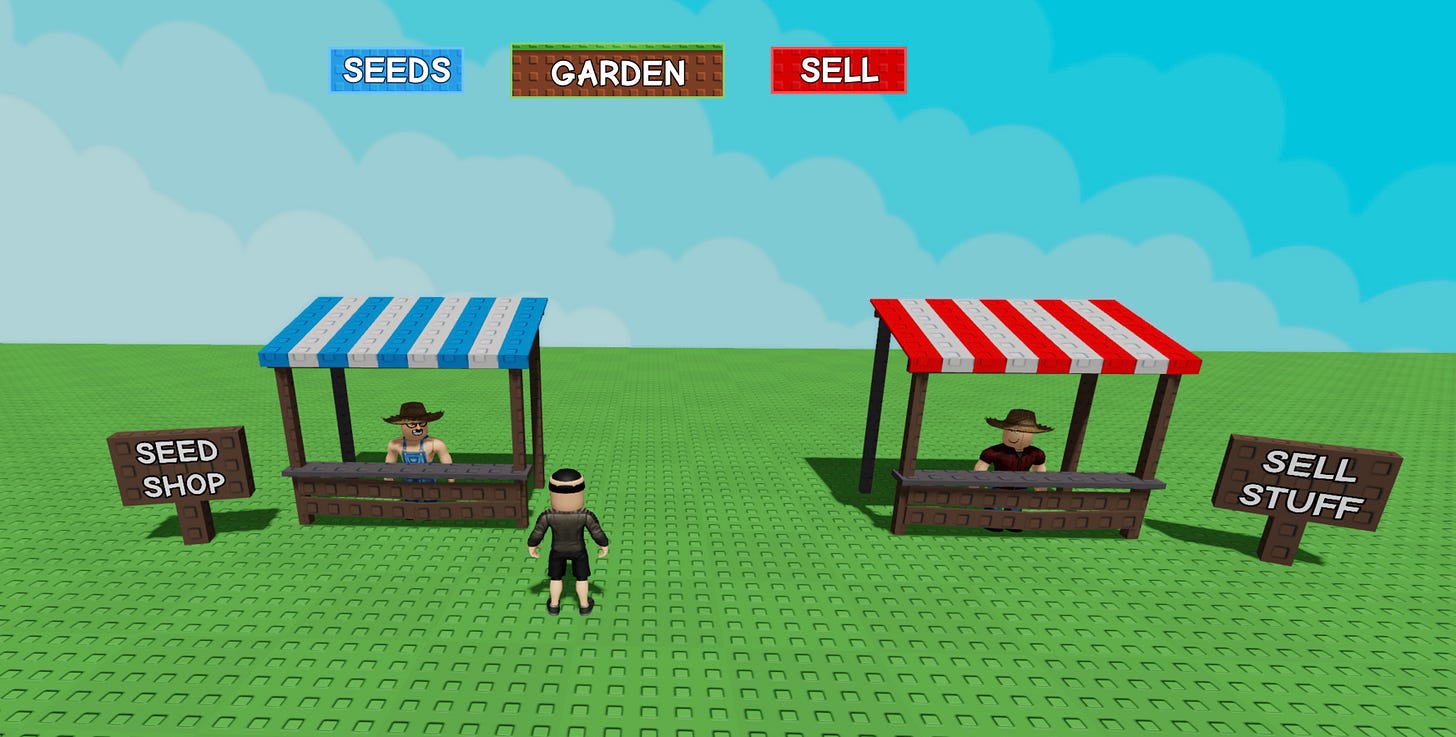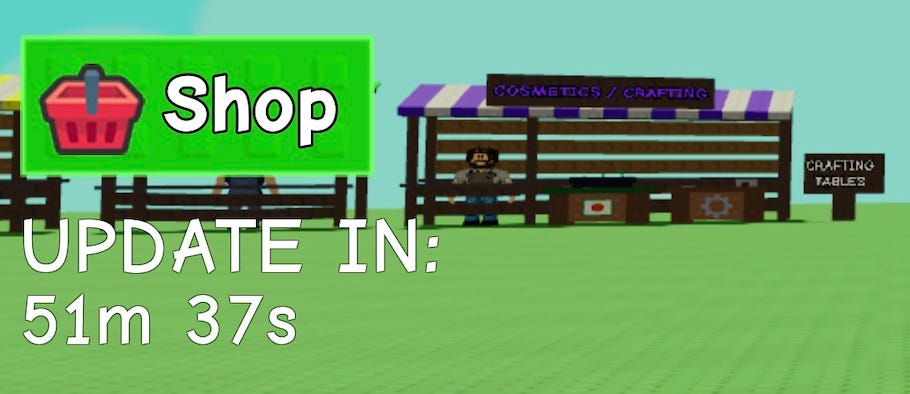Business Lessons from the Gamification of User Engagement
Grow a Garden: The meteoric rise of the most popular and top earning Roblox game
Hey everyone, it’s Jens here and I’m back with the newsletter Scaling Customer Value, which provides business educational content on how to engage, grow and retain customers to help you turn your existing customers into the main growth engine for your business.
In today’s newsletter, we are going to take a closer look at the current online gaming craze surrounding the new game Grow a Garden. This article is not a game review as such, but rather an attempt to explore why it’s become such a success and how a business audience could learn from some of the concepts and user engagement techniques we’ll take a closer look at shortly.
Let’s dive straight in.
What is all the fuzz about?
Grow a Garden is a new game on the US-based online gaming platform Roblox. It has gained huge popularity and widespread attention, despite only being released in March 2025.
Users are clearly loving the game, which is reflected in the activity and usage metrics which are remarkable:
Grow a Garden also hit the all-time record for the ‘highest volume of players online at the same time’ which was broken on 21 June 2025 with 21.3 million players.
I have reviewed the Roblox charts and the Grow a Garden game takes the top spot in several different categories:
Most Popular Game (daily users)
Top Revisited Game (proportion of users who come back after a week)
Top Playing Now (number of concurrent users)
Top Earning Game (total of Robux spent in last 7 days) — i.e. the in-game currency
How does the game work?
I was intrigued to learn about and understand the game mechanics in more detail, so I decided to try it out for myself.
The game starts by loading up while showing some simple instructions. When the game screen opens up, you’ll hear calming and uplifting classical music — tunes from Vivaldi, Beethoven, Dvorak and Edvard Grieg are played throughout the game.
The first impressions of the game are that there is stillness and a limited number of things around me, so it is easy to orientate and understand what to do next.
Nearby your starting point is an empty plot of land, your own virtual garden which is there for you to grow!
In the game, there’s a Seed Shop where you can buy seeds - carrots, strawberries, blueberries, tomatoes and more.
There is also a Pet Shop, so why not also have a few bunnies running around — Hello!
The overall concept of the game is really simple and straightforward:
Buy seeds(+gear/pets) → plant → grow → harvest → sell → repeatThere is a twist to the game-play though as you are also able to steal other players fruits, but this will require a small payment of Robux (the in-game currency in Roblox).
The whole gaming process is easy, fun, laid back and also there doesn’t seem to be any clear ending to the game.
One specific feature of the game which feels like a rare find is that the garden also grows while the player is offline. In other words, it means that a player can log off and come back to the game at a later time and still will be able to reap the returns of what you sowed (literally).
Finally, despite the calm and relaxed nature of the game that I’ve been describing, there is new stuff happening at regular intervals, such as restocking of supplies at the seeds, gear and pet shop.
There are also bigger things to look forward to and be excited about, such as special in-game events and regular game updates.
What can other businesses learn from this?
Product & Marketing
Picking a niche: Grow a Garden has picked a niche which doesn’t feel crowded. They have clearly differentiated themselves from the many of the action-packed and adrenaline-filled games out there. The experience of the game provides really is really quite different and refreshing.
Concept: It’s simple, fun, relaxing, collaborative, creative and builds on a theme that is relatable and appeals to a broad audience.
Pricing: In contrast to the only similar game I can think of (Animal Crossing by Nintendo), you don’t need a gaming console or purchase the game up-front to start playing. In other words, as the game is free to play on the Roblox platform (with optional paid-for extras) the barrier to entry is low and accessibility is high.
Promotion: The social media aspect has been important in growing the awareness and popularity of the game. A lot of gamers are sharing tips and tricks and showing off progress from their game-play on social media sites like YouTube and TikTok, racking up millions of views in the process which also provides free marketing for the game.
Existing user management
User activation: The game provides short and clear educational instructions while the game is loading up. The amount of information you are presented with at any one time is digestible and there is clarity on next steps. The simplicity of the game provides an easy and fast learning curve to get started and soon wanting more. These are the hallmarks of a smooth and well-working “activation journey”!
User engagement: There is a social and collaborative aspect to the game, whereby there also exists something called a Friend Boost, which gives them extra money when you sell your fruits (+10% for each friend). This set-up encourages users to play the game in pairs or as a group, further boosting activity rates and active volumes. There are also time-driven game updates (e.g. special events) to drive user engagement to build anticipation and excitement.
User retention
A key aspect of the game is that the garden “grows offline”, which means that you will naturally want to come back to it at a later point. This functionality creates a game-loop that will keep user activity high — which in turn is key to keep user attrition low.
END OF ARTICLE.
That concludes today’s newsletter. Thank you for reading and being a loyal subscriber to Scaling Customer Value!
If you enjoyed this article, please tap the like button, share or leave a comment.
To receive similar content directly to your email inbox in the future, sign up for free below.









A super interesting read, Jens! Though I am not so much of a game person, I always love to explore the field especially if there are lessons to learn :) This approach reminds me of a game - 'Age of Empires'. It started slow with a couple of villagers building and growing stuff - houses, farms, cattle grazing and slowly picked up into fight amongst civilizations.
This is the first I’ve heard or read of Grow a Garden but one lesson I picked up their gamification strategy is how they allow players gain even when they’re offline. The garden grows even while offline. I think that’s bold and confident and something I would love to test out in my business.
Also the post read like a great story, I didn’t even realize when I got to end.